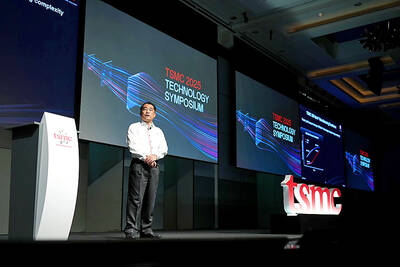Negotiators with the United Auto Workers (UAW) union and Chrysler LLC remained at the bargaining table as efforts to reach a tentative contract agreement intensified, a source briefed on the talks said.
The person, who requested anonymity because the talks are private, said they are expected to run through the weekend.
UAW reached a tentative agreement with General Motors Corp on Sept. 26, but the agreement must be ratified by a majority of GM's UAW members to take effect. Members began voting last week and are expected to wrap up votes by Wednesday.
UAW did not announce which automaker it would negotiate with next, but the person briefed on the talks said the UAW selected Chrysler as its next bargaining target and would turn to Ford last.
Ford spokeswoman Marcey Evans and UAW spokesman Roger Kerson did not return calls seeking comment on Saturday.
Chrysler spokeswoman Michele Tinson confirmed that the parties were negotiating Saturday but would not comment further.
UAW typically reaches an agreement with one automaker and then tries to get the others to match the terms.
But it was unclear whether Chrysler and Ford will match GM's agreement.
Chrysler is seeking healthcare concessions that UAW already granted to Ford and GM, for example.
Chrysler and Ford also may balk at making specific product commitments at US plants, as GM did.
Another sticking point in the talks is a UAW-managed retiree healthcare trust that GM's agreement would establish.
Under the agreement, GM would put nearly US$30 billion into the trust and pay US$5.4 billion to cover retirees' healthcare until the trust starts paying out benefits in 2010.
GM has a total of US$51 billion in unfunded retiree health costs, but it wasn't required to put that full amount into the trust. Chrysler has approximately US$19 billion in unfunded retiree health costs.
Another source briefed on the talks said on Friday that Chrysler wants to tailor the health care plan to better suit its needs and might not want to contribute as much as GM.
The trust benefits GM more than Chrysler or Ford because GM has the most retirees and surviving spouses. GM also has an older work force with more employees on the verge of retirement.
That person also requested anonymity because the talks are private.
UAW's contracts with Chrysler, Ford and GM were originally set to expire on Sept. 14.
UAW selected GM as the lead company and strike target in the negotiations and reached the tentative agreement after a two-day strike. Chrysler and Ford have been extending their contracts indefinitely.

DEMOGRAPHICS: Robotics is the most promising answer to looming labor woes, the long-term care system and national contingency response, an official said Taiwan is to launch a five-year plan to boost the robotics industry in a bid to address labor shortages stemming from a declining and aging population, the Executive Yuan said yesterday. The government approved the initiative, dubbed the Smart Robotics Industry Promotion Plan, via executive order, senior officials told a post-Cabinet meeting news conference in Taipei. Taiwan’s population decline would strain the economy and the nation’s ability to care for vulnerable and elderly people, said Peter Hong (洪樂文), who heads the National Science and Technology Council’s (NSTC) Department of Engineering and Technologies. Projections show that the proportion of Taiwanese 65 or older would

Nvidia Corp yesterday unveiled its new high-speed interconnect technology, NVLink Fusion, with Taiwanese application-specific IC (ASIC) designers Alchip Technologies Ltd (世芯) and MediaTek Inc (聯發科) among the first to adopt the technology to help build semi-custom artificial intelligence (AI) infrastructure for hyperscalers. Nvidia has opened its technology to outside users, as hyperscalers and cloud service providers are building their own cost-effective AI chips, or accelerators, used in AI servers by leveraging ASIC firms’ designing capabilities to reduce their dependence on Nvidia. Previously, NVLink technology was only available for Nvidia’s own AI platform. “NVLink Fusion opens Nvidia’s AI platform and rich ecosystem for

Taiwan Semiconductor Manufacturing Co (TSMC, 台積電) yesterday said it is building nine new advanced wafer manufacturing and packaging factories this year, accelerating its expansion amid strong demand for high-performance computing (HPC) and artificial intelligence (AI) applications. The chipmaker built on average five factories per year from 2021 to last year and three from 2017 to 2020, TSMC vice president of advanced technology and mask engineering T.S. Chang (張宗生) said at the company’s annual technology symposium in Hsinchu City. “We are quickening our pace even faster in 2025. We plan to build nine new factories, including eight wafer fabrication plants and one advanced

‘WORLD’S LOSS’: Taiwan’s exclusion robs the world of the benefits it could get from one of the foremost practitioners of disease prevention and public health, Minister Chiu said Taiwan should be allowed to join the World Health Assembly (WHA) as an irreplaceable contributor to global health and disease prevention efforts, Minister of Foreign Affairs Lin Chia-lung (林佳龍) said yesterday. He made the comment at a news conference in Taipei, hours before a Taiwanese delegation was to depart for Geneva, Switzerland, seeking to meet with foreign representatives for a bilateral meeting on the sidelines of the WHA, the WHO’s annual decisionmaking meeting, which would be held from Monday next week to May 27. As of yesterday, Taiwan had yet to receive an invitation. Taiwan has much to offer to the international community’s